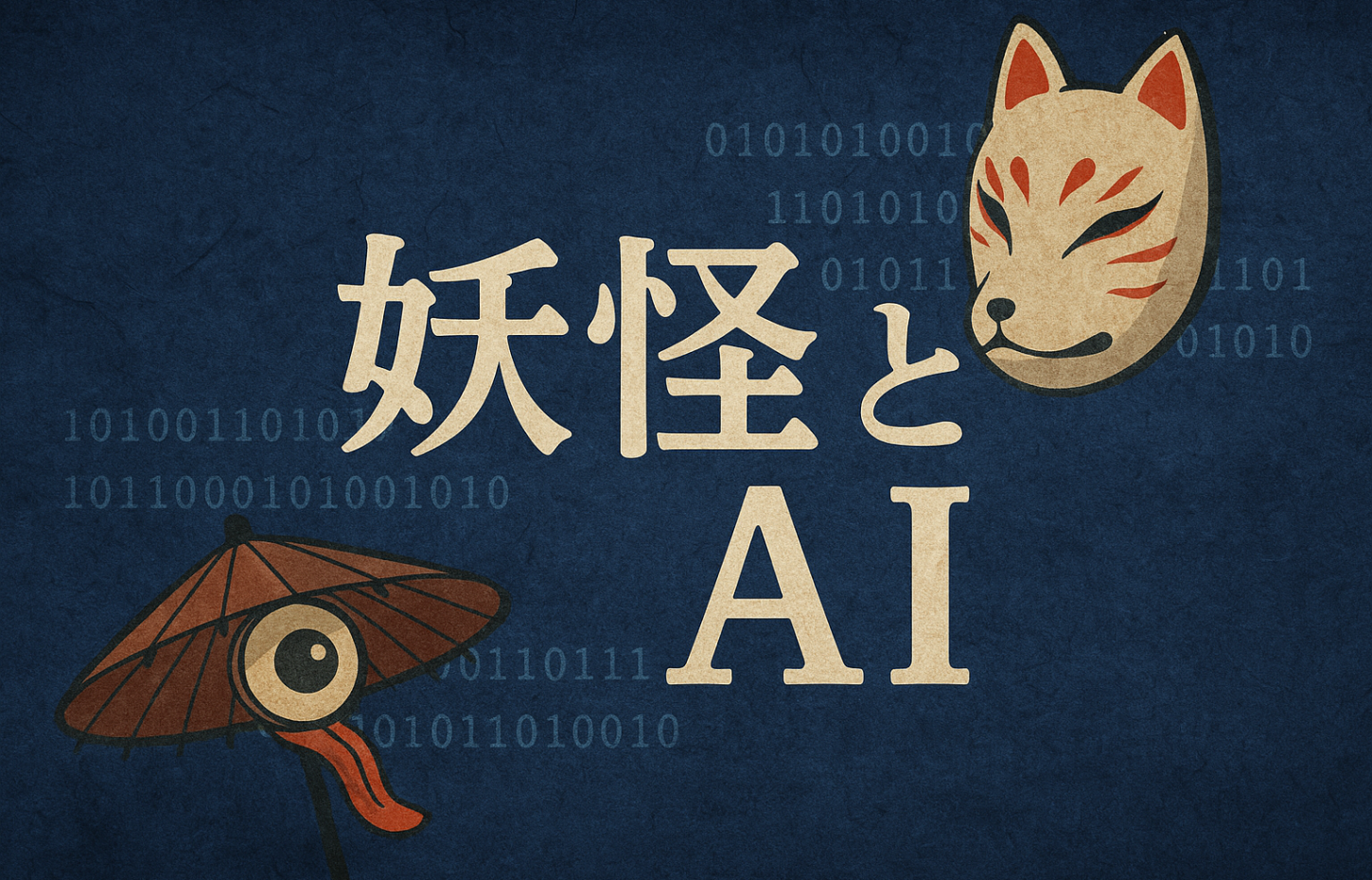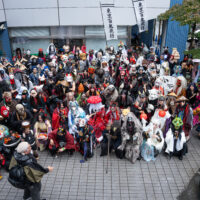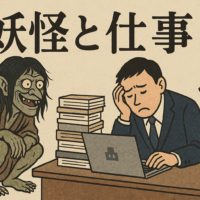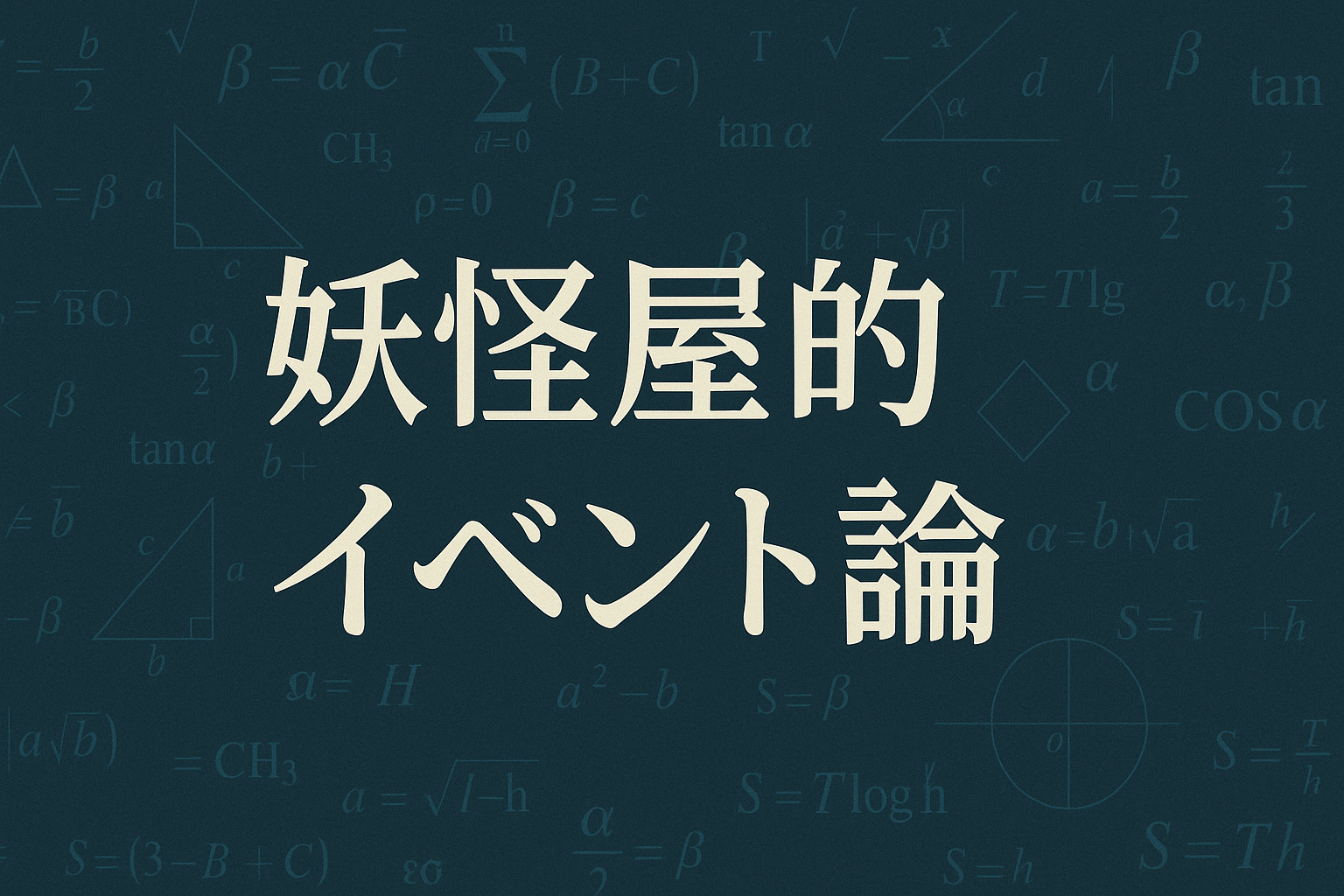
The Japanese Way of the Middle Way as Taught by Yokai: Wisdom for Living in Fluctuation

The Middle Way is a Buddhist concept of "a way of life that is not biased towards either pleasure or hardship."
However, in Japan, the Middle Way has transcended the boundaries of Buddhist doctrine and has blended into Shinto, Confucianism, and local life, living on in a unique way.
Behind this lies a teaching that has been passed down not through scriptures or rituals, but through more familiar "storytelling."
Yes - it's a ghost story.
Yokai are not simply symbols of strangeness or fear.
Rather, through yokai, Japanese people have learned about the importance of maintaining a sense of distance from nature, reconsidering the simple line between good and evil, and cultivating a sense of protecting boundaries.
Today I would like to talk about three of the centrist roles that I believe are particularly important.
The Middle Way as "practical wisdom" rooted in daily life
The Middle Way is not a philosophy found only in Zen meditation or sutras.
It has come to live on as "practical knowledge" about how to make decisions and behave in our daily lives.
And yokai were the creatures that most vividly conveyed this practical wisdom.
For example, kappa.
Rivers bring life-giving water, but at the same time they pose the risk of flooding and swallowing up villages.
Kappa is the personification of this duality.
The stories that "if you show respect to a kappa, they will not harm you" and "if you offer them a cucumber, you will gain their favor" are symbols of modesty and respect near water.
As the children listened to the story of the kappa, they naturally learned that "rivers are both playgrounds and frightening places."
These ghost stories are not just frightening stories, but also teach us how to interact with nature.Life TextbookIt was.
Respecting nature as a god, as in Shinto, detachment, as in Buddhism, and moderation, as in Confucianism - these three elements come together and come to life in the form of stories.
A medium to loosen the dualism of good and evil
Religion and ethics often make a clear distinction between good and evil.
Clear standards such as "this is good" and "that is bad" are necessary in order to maintain social order.
But the real world is more complicated.
Remember the story of the Yamauba?
A kind old woman offers wild vegetables to one traveler and shows him the way.
Another traveler is a terrifying onibaba who bares her fangs and takes the life of another.
Both are Yamauba's true nature, and her expressions change depending on the other person's attitude and the situation.
From a human perspective, we would like to judge them as "good or evil," but Yamauba is a being that easily transcends that boundary.
The monsters were like thisA medium that shakes stereotypes of good and evilis.
This breaks down the simplistic thinking that "it is good, so it is completely safe" or "it is bad, so it is completely harmful," and cultivates a more middle-of-the-road sense of "making judgments according to the situation."
Relationships between people and interactions with nature cannot exist without this flexibility.
Boundary protection features
And I think the most important role of yokai is to "protect boundaries."
Yokai often represent the relationship between humans and the other world, humans and nature.Boundaryappears in.
At the entrance to the mountains, on the banks of a river, on the border between the village and the forest, between day and night.
They are the points of contact where human life meets the outside world, and if we are not careful, the balance can be disrupted.
The story of Umibozu is a typical example.
Suddenly, a huge shadow appears from the sea in front of a fishing boat.
It is said that Umibozu either capsizes ships or simply stares at them.
However, fishermen have learned from this being, "Don't go out when the sea is rough."
The Umibozu is a warning light that warns of the dangers of the boundary known as the sea.
Maintaining boundaries is not just about drawing lines.
Staying aware of where that line is and when it changes is what a moderate attitude is all about.
If we disregard boundaries, the blessings of nature will be taken away and disaster will creep in.
Yokai have repeatedly told us this in the form of stories.
Yokai as "mediators" connecting the three teachings
Looking at it this way, yokai are positioned exactly between the three schools of thought: Shinto, Buddhism, and Confucianism.A mediator who helps people live a balanced lifeIt is clear that they have achieved this.
Shinto teaches awe and gratitude towards nature, Buddhism teaches flexible judgment according to the situation, and Confucianism teaches moderation and courtesy.
Yokai have woven all of this into a single story and conveyed it to people as an experience.
Moreover, it is not in the form of a stiff sermon or scripture, but as a "living story" that is filled with laughter and fear.
A child stands by the river, thinking of kappa and watching his step.
A traveler remembers a mountain witch on a mountain path and bows before passing by.
At the port, a fisherman remembers Umibozu and checks the weather.
It is the accumulation of such behavior that has shaped the Japanese sense of the middle way.
It's easy to dismiss yokai stories as mere old tales.
However, it also contains the wisdom to live in uncertainty, which is necessary for us to survive in the coming age.
It does not tilt too far, but it is not colorless or transparent either, and continues to choose the optimal course depending on the situation.
It's like a boat floating on a river adjusting its sails to match the changing tide.
And perhaps even now, the yokai are gently smiling beside us, helping us to hone our sense of steering.








No comments yet.